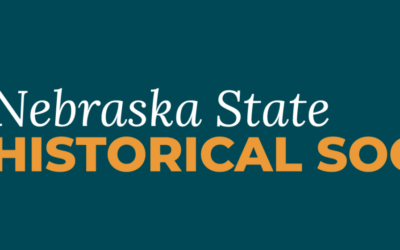Like something out of detective fiction, a crew digging a trench found an unmarked grave in a rural field where no graves were known to exist. This 2000 discovery near Lynch, Nebraska, resulted in an excavation led by Nebraska State Historical Society archeologist Gayle Carlson, now retired. The uncovered skeleton had what appeared to be a bullet hole in the forehead. Who was this person? And what were the circumstances of death? Carlson now has a tentative answer, shared with readers of the NSHS quarterly newsletter, Nebraska History News (January/February/March 2012).
Based on bones, teeth, and other evidence, Carlson and others concluded the skeleton belonged to a man in his twenties or thirties. The burial likely took place between the 1880s and 1910, based on coffin hardware evidence. Carlson and Nebraska History Museum curator Laura Mooney found a match for some decorative escutcheon plates and thumbscrews in an 1892 funeral supply catalog.
Retired Lynch police chief Albert Lee told Carlson that his great-grandfather once owned the property where the grave was found. Then NSHS senior research historian Jim Potter suggested a book titled Vigilante Days: Frontier Justice Along the Niobrara, by Harold Hutton. In its pages Carlson learned of a man named Jack Richards.
Richards was said to be the accomplice of Holt County father and son Ralph and Charlie Hills, who were accused of stealing livestock, among other crimes. Vigilantes apprehended the Hills on June 29, 1894, and apparently later hanged them. Richards was told to leave the country but went only as far as nearby Knox County and maintained his ties with the Hills family. On September 20, 1895, he was returning from Holt County with a wagonload of supplies, accompanied by two of the Hills’ teenage girls. While passing through Boyd County, the group stopped and Richards went into a cornfield beside the road to pick some ears for his team.
The field’s owner, Jacob Bruza, saw Richards. Furious about the depredation, he told his wife to get his gun-apparently a shotgun loaded with homemade lead slugs. Richards took a rifle from the wagon and waited to see what Bruza would do. Presently, one or more shots were fired and Richards fell mortally wounded. The girls left the scene immediately with the team and wagon.
Bruza and a neighbor took Richards to the Lynch hospital, where he died two days later. Richards was said to have a wound in his forehead, another in the side of his face, and a third in his left side. Some thought Bruza would be convicted of murder, but he was acquitted. Vigilante influence was thought to be the reason.
Cemetery records show no evidence of Richards’s burial in Holt, Knox, or Boyd counties, though it’s possible that he’s buried in an unmarked grave. But retired chief Albert Lee believes that his great-grandfather, a Presbyterian minister, may have permitted the burial on his property.
The remains will soon be reburied in a Boyd County cemetery near the discovery site. Identity is still speculative. DNA testing could resolve the issue, but only if known relatives could be located for comparative purposes. All evidence thus far is consistent with the grave being that of Jack Richards.



